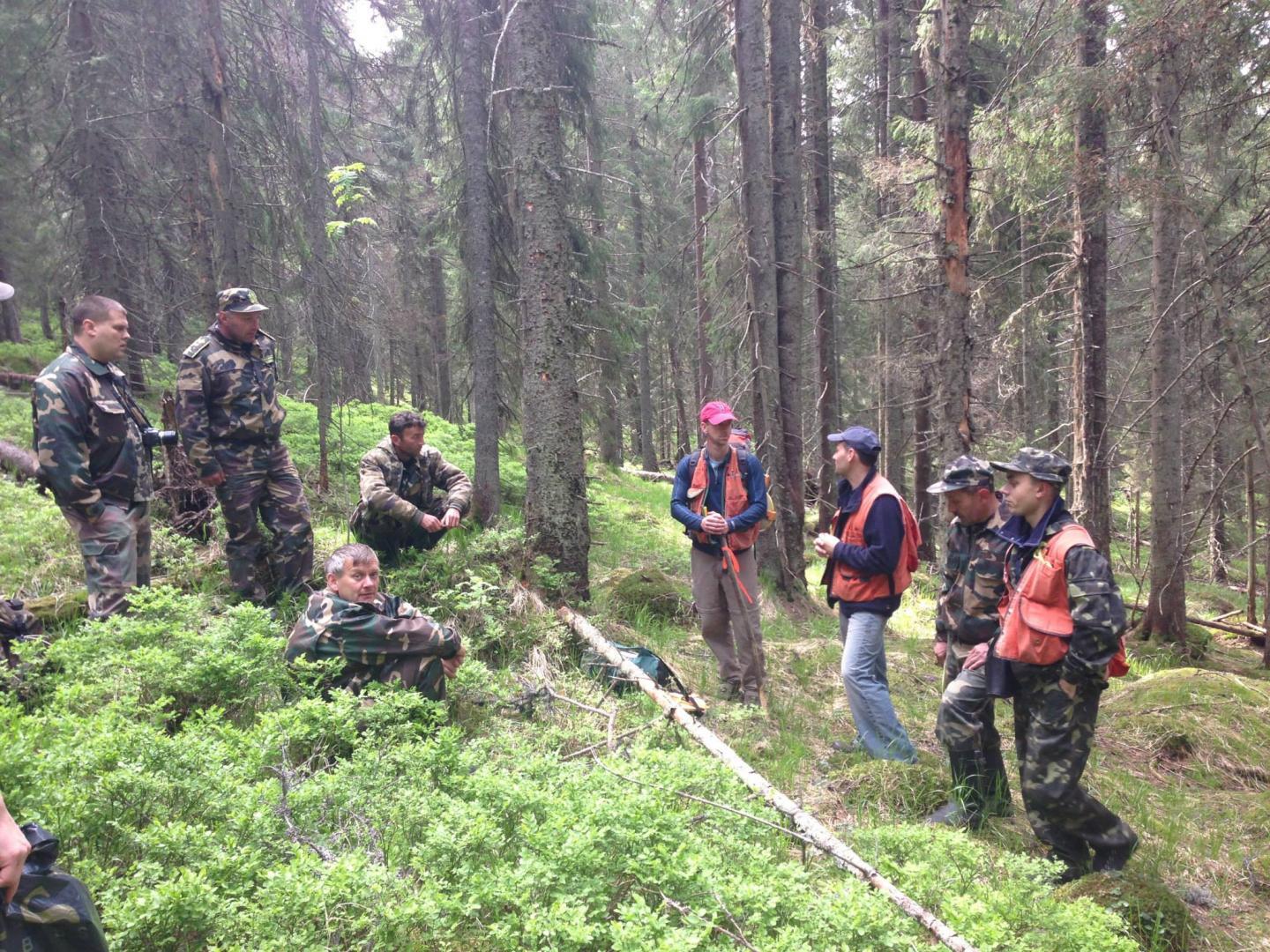- A study finds 3.4 million acres (13,760 square kilometers or 5,313 square miles) in Europe fit the definition of primary forest set by the FAO.
- These forests are scattered around Europe and provide important habitat for wildlife.
- But the researchers warn that less than half are strictly protected, meaning that logging is legal in the majority.
- They urge the EU to increase the official level of protection granted to these forests.
Dotted by historic cities nestled in a patchwork countryside of fields and pasture, today’s Europe is at once urban and bucolic. But where sheep range over grassy knolls, bison used to roam through forests; where sunflowers and tulips grow, wolves once hunted. And fairytales warned children to stay out of the woods.
But the woods that once covered Europe is now largely gone, cleared by human settlers to grow food and build houses starting around 6,000 years ago. And with the woods went the animals that used to live in them. Grey wolves are now relegated to small pockets of habitat here and there, as are Eurasian brown bears and European bison. Just one large tract of intact lowland forest remains in Europe – an old-growth oasis straddling the border of Poland and Belarus whose 15th century designation as a hunting ground for royalty spared it from the axe.
However, a new study published recently in the journal Diversity & Distributions finds there may be more small tracts of “primary” forest in Europe than previously believed. Its authors say these forests provide important refuges for many species, but caution a lack of protection is leaving a large proportion threatened by deforestation.

The study was conducted by some two-dozen researchers at institutions in Europe and the U.S. They used tree cover datasets and interviewed thousands of experts working in forests around Europe to determine which forests qualified as primary.
“We contacted hundreds of forest scientists, experts, and NGO activists from all over Europe asking to share information on where to find such forests in their country,” said Francesco Maria Sabatini, a scientist at Humboldt University in Berlin and lead author of the study. “Without their direct engagement, we could have never been able to build our database, which is the most comprehensive ever compiled for Europe.”
What exactly makes a forest primary is a bit of a debate – tropical rainforests are generally considered primary if there is no evidence whatsoever of human disturbance, while in Europe the definition is a bit looser. For the purpose of their study, the researchers used the definition set by the Food and Agriculture Organization of the United Nations (FAO) set in 2005, which categorizes primary forest in Europe as “primeval, virgin, near-virgin, old-growth and long-untouched.” Basically, under this definition, a forest qualifies as primary if there’s been no sign of human modification for at least the past 60 years.
The researchers discovered 3.4 million acres (13,760 square kilometers or 5,313 square miles) in Europe fit this definition of primary.
“It is not that these forests were never touched by man. This would be hard to believe in Europe,” Sabatini said. “Still, these are forests where there are no clearly visible indications of human activities. Maybe that’s because they were blurred by decades of non-intervention, where ecological processes follow a natural dynamic.”
The authors say this natural ecological dynamic means that these forests are able to provide habitat for more species than forests that have been altered more recently. But they caution that ability can persist only as long as an undisturbed forest stays undisturbed – which may not be that long for many of them.

When the researchers mapped out these forests and checked to see how they corresponded to protected areas, they discovered that 89 percent are receiving some kind of official protection. But less than half – 46 percent – are granted strict protection, meaning that the majority could be legally logged.
“Wide patches of primary forest are being currently logged in many mountain areas, for instance in Romania and Slovakia and in some Balkan countries,” said Miroslav Svoboda, a scientist at the University of Life Science in Prague and co-author of the study. “A soaring demand for bioenergy coupled with high rates of illegal logging, are leading to the destruction of this irreplaceable natural heritage, often without even understanding that the forest being cut is primary.”
The researchers say their findings could help direct forest conservation in Europe where it’s most valuable and needed. They also pinpointed other forested areas where land-use level is low, which they say could indicate places where there may be more tracts of primary forest.
“Primary forests have an exceptional value, both environmental and cultural,” Svoboda said, “and preserving their integrity should be a priority of any EU environmental strategies.”
Banner image: Once extinct in the wild, European bison (Bison bonasus bonasus) have been reintroduced to Białowieża Forest in Poland/Belarus. Photo by Michael Gäbler via Wikimedia Commons (CC BY-SA 3.0)
Citation: Sabatini, F. M., Burrascano, S., Keeton, W. S., Levers, C., Lindner, M., Pötzschner, F., … & Debaive, N. Where are Europe’s last primary forests?. Diversity and Distributions.
Feedback: Use this form to send a message to the editor of this post. If you want to post a public comment, you can do that at the bottom of the page.
